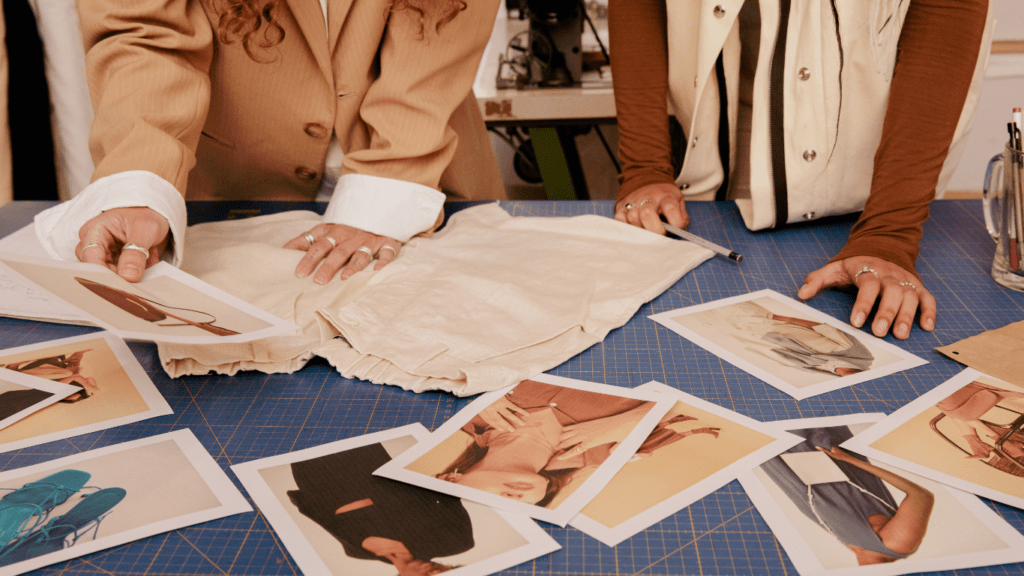Understanding Fast Fashion
Fast fashion caters to the demand for trendy, affordable clothing. It relies on quick production cycles and inexpensive materials.
Key Characteristics
Fast fashion is known for its rapid production. New designs appear in stores within weeks instead of months. Prices are low due to cheap labor and materials. Items often have short lifespans due to poor quality. Trends change quickly, increasing clothing waste. Environmental and ethical impacts are significant, involving high carbon footprints and questionable labor practices.
Popular Brands
Several brands dominate the fast fashion industry. Zara, H&M, and Forever 21 are prominent examples. Each brand releases new collections frequently. Zara introduces about 20 collections annually. H&M updates its inventory every few weeks. Forever 21 offers a vast range of styles, attracting a young audience. Other notable brands include Uniqlo, Shein, and Boohoo. These brands appeal to consumers seeking the latest trends at low prices.
Understanding Slow Fashion
Slow fashion emphasizes sustainable and ethical practices, focusing on quality over quantity. It encourages mindful consumption and aims to reduce environmental impact.
Key Characteristics
Slow fashion prioritizes quality and sustainability. Brands use eco-friendly materials like organic cotton and recycled fibers. Production processes are transparent, ensuring fair wages and safe working conditions. Items are designed to be timeless, with styles that outlast trends. This approach minimizes waste and promotes long-term use. Unlike fast fashion, slow fashion avoids overproduction, creating items in small batches.
Popular Brands
Several brands champion slow fashion principles. Patagonia focuses on environmental responsibility. They use recycled materials and offer repair services for their products. Eileen Fisher is committed to ethical labor practices and sustainable materials, with initiatives supporting circular fashion. Everlane emphasizes radical transparency, sharing detailed information about their factories and pricing. These brands pave the way for a more sustainable fashion industry.
The Environmental Impact
Consumer interest in fashion’s environmental impact continues to rise. Examining fast fashion and slow fashion reveals contrasting ecological footprints.
Fast Fashion’s Footprint
Fast fashion significantly damages the environment. It relies on rapid production, often using synthetic fabrics like polyester, which are petroleum-based and non-biodegradable. Producing these garments emits large amounts of greenhouse gases. According to the Ellen MacArthur Foundation, the fashion industry generates about 1.2 billion tons of CO2 annually.
Water consumption is another major issue. Dyeing and finishing textile processes, prevalent in fast fashion, require substantial water. The World Bank estimates 20% of global water pollution comes from textile treatment and dyeing. Additionally, the short lifespan of fast fashion items leads to increased waste. The Environmental Protection Agency (EPA) reports that 11.3 million tons of textiles ended up in US landfills in 2018.
Slow Fashion’s Sustainability

Slow fashion emphasizes reducing environmental impact through sustainable practices. Brands use eco-friendly materials like:
- organic cotton
- bamboo
- recycled fabrics
minimizing resource extraction and pollution. Unlike fast fashion, slow fashion prioritizes high-quality products that last longer, reducing overall waste.
Water conservation plays a crucial role in slow fashion. Using natural dyes and less water-intensive processes lowers the ecological footprint. For instance, Patagonia employs innovative methods to save water, such as using waterless dyeing techniques for certain product lines.
Transparency and ethical production are fundamental in slow fashion. Brands like Everlane provide detailed information about their supply chains and ensure fair labor practices, further reducing environmental and social harm. By focusing on sustainable methods and fair treatment, slow fashion strives to create a more environmentally responsible industry.
Economic Implications
Consumers’ shifting preferences from fast fashion to slow fashion have considerable economic implications.
Cost Comparison
Fast fashion offers lower upfront costs, making it accessible to budget-conscious shoppers. A dress from a fast fashion brand like H&M might cost $15-$30, whereas a similar item from a slow fashion brand can be priced at $100-$150. This cost difference arises from the use of cheap materials and low-wage labor in fast fashion production. Slow fashion brands invest in quality materials and fair labor practices, driving up costs but providing longer-lasting items.
Fast fashion engages in high sales volumes to maintain profitability. Brands frequently release new collections to entice more purchases, keeping prices low. Slow fashion, however, operates on lower sales volumes. These brands focus on producing timeless pieces that last longer, encouraging consumers to buy fewer items less frequently.
Job Market Effects
Fast fashion creates numerous jobs in manufacturing, particularly in developing countries. However, these jobs often come with poor working conditions and low wages. The International Labour Organization reports that garment workers in countries like Bangladesh and India earn between $68-$120 monthly.
Slow fashion aims to provide ethically produced clothing by paying fair wages and ensuring safe working conditions. Brands like Patagonia and Everlane demonstrate this commitment, with employees in factories earning living wages that meet local standards. This shift can reduce exploitation in the garment industry, impacting labor markets positively.
Fast fashion’s high turnover rate can lead to unstable employment with frequent layoffs. Slow fashion offers more stability by focusing on sustainable growth and fair practices. This approach can support workers in maintaining consistent, long-term employment, benefiting local economies.
Changing Consumer Preferences
The shift from fast fashion to slow fashion results from evolving consumer preferences prioritizing sustainability and ethical production. These changes reflect broader societal values.
Factors Influencing the Shift
- Several factors drive this shift, including environmental awareness, ethical concerns, and quality over quantit
- Consumers recognize the environmental impact of fast fashion, such as pollution and waste.
- They also seek transparency in production practices, wanting to support brands committed to fair labor standards.
- The focus on superior materials and timeless design attracts those looking for long-lasting wardrobe investments.
Demographic Trends
Younger generations, particularly Millennials and Gen Z, are at the forefront of demanding sustainable fashion. Studies show that 53% of Gen Z prefer eco-friendly brands. They use social media to educate themselves about environmental issues, influencing their purchasing decisions. Older demographics are gradually following suit, embracing slow fashion principles as they become more educated on the benefits of sustainable practices.



 Founder & Editor-in-Chief
As the visionary behind Glam World Walk, Anthonyo Corbinollo brings his passion for fashion, beauty, and luxury to life through captivating content that resonates with glamour enthusiasts worldwide. With over a decade of experience in the fashion industry, Anthonyo curates a platform that celebrates the finest trends, exclusive brands, and lavish travel destinations. His dedication to highlighting the elegance in everyday life has made Glam World Walk a go-to source for fashionistas and style icons alike.
Founder & Editor-in-Chief
As the visionary behind Glam World Walk, Anthonyo Corbinollo brings his passion for fashion, beauty, and luxury to life through captivating content that resonates with glamour enthusiasts worldwide. With over a decade of experience in the fashion industry, Anthonyo curates a platform that celebrates the finest trends, exclusive brands, and lavish travel destinations. His dedication to highlighting the elegance in everyday life has made Glam World Walk a go-to source for fashionistas and style icons alike.
